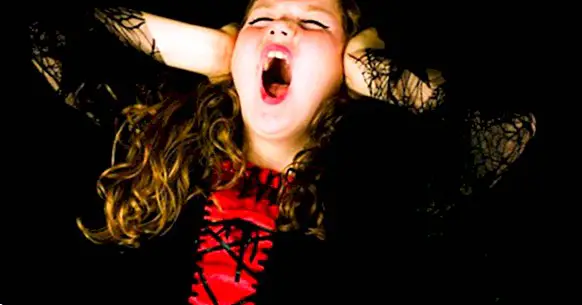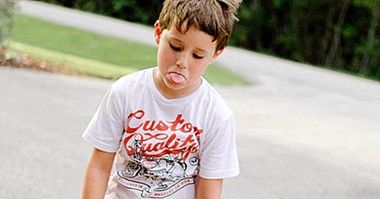Child tantrums: why they appear and how to manage them
Probably most of us will have seen on some occasion, even in the cinema or in an advertisement, as if in the face of a refusal to buy a candy or toy, a child begins to cry, throw himself to the ground and kick. We are talking about infantile tantrums , which can be frustrating for the parents of the child, sometimes not knowing what to do to stop it.
In this article we are going to talk about what these tantrums are, the fact that they are habitual and normative in most cases and some guidelines to follow in order to manage them.
- Related article: "The 6 stages of childhood (physical and psychic development)"
What do we call a child tantrum?
All or almost all of us have seen a child's tantrum on occasion, but we rarely stop to think about how this concept is defined.
We understand child tantrum to the set of actions and manifestations both emotional and physical that a child performs as an expression of their negative emotions of frustration or anger , experienced very intensely and expressed with great virulence in a short space of time. This type of explosive manifestation tends to include crying, shouting, throwing oneself on the ground and kicking and shaking, and sometimes also running and oppositional behaviors to the contact or closeness of their caregivers.
Generally these tantrums arise from situations of frustration or lack of understanding of the situation, as a result of not being able to get something they want. They can also occur in response to an unsuccessful attempt to demonstrate a progressive independence and autonomy, or even as manipulation strategy to achieve its objectives if they learn that in this way they get what they want.
The typical scene that most people imagine is that which occurs in supermarkets or toy stores, although in reality it could happen in case of any situation, whether or not another person is involved who denies their wishes. Child tantrums can be something occasional or frequent , depending in each case on the minor's personality and his frustration management capacity.
It must be taken into account, however, that unless they have learned them as mechanisms to achieve their goals, it is usually something that the child does not do to bother, being simply generated by not knowing how to respond to the discomfort.
- Maybe you're interested: "How to control anger: 7 practical tips"
Is it normal? When do they appear?
Although many parents can find these situations irritating, unjustified and even worrisome, the truth is that the presence of infantile tantrums is normal and even frequent in childhood.
They appear in boys and girls in response to frustration, in a vital stage in which they have not yet learned to regulate intense emotions . Also when they want the attention of their parents or caregivers, or when they can not be independent. Although around the year of life there are usually some signs of it, it is usually especially frequent between the second and third year of life.
Temper tantrums should decrease as the child learns to regulate their emotions, being the most frequent that by five years have disappeared or have been greatly reduced.
In fact, they are part of a phase of evolutionary development , in which little will be able to acquire tolerance to frustration, the ability to delay gratification (ie know how to wait in order to obtain benefits from their actions instead of wanting immediate gratification) and the ability to self-manage to a greater extent .
Although they are part of a normative development, we must bear in mind that they do not have to appear in all children. Likewise, they can also appear excessively or altered in the context of some behavioral disorder, such as in the defiant negativist disorder, such as difficulty in inhibiting responses as in ADHD or as a response to incomprehension of specific situations as in some autistic spectrum disorders.
How to manage them?
Childish tantrums can be difficult to carry and can leave us paralyzed and not knowing what to do. That is why here are some basic guidelines to try to manage them.
First, It is highly contraindicated to shout or hit a child to stop the tantrum: more than making him calm down, it can confuse him even more and even generate discomfort towards the people in question. Also, remember that the child is trying to generate his own identity.
What is recommended is stay close and take into account the manifestation of suffering , but without compromising or pampering him: we are going to make him see what that attitude does not allow us to understand him and that when he behaves correctly then they can talk. It is important to stand firm and not give up if we do not want the child to learn that this can be used to manipulate us. All this should be done without showing rejection towards the child.
Likewise, it is necessary to ensure that in the development of the tantrum the child does not cause harm to himself or to others, protecting him in this regard. Assess what causes it It can help us identify elements that can be conflicting and work with the child, as well as not overexpose them.
It is also useful to make clear the limits and behavior expected of them, as well as once the tantrum begins to work with him aspects such as the expression of both positive and negative emotions, for example to recognize and communicate effectively and acceptable.



















